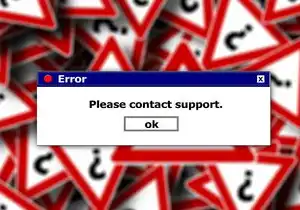本文目录导读:
HTTP internal server errors are among the most frustrating issues web developers face. These errors occur when a server encounters an unexpected condition that prevents it from fulfilling a request made by a client. In this comprehensive guide, we will delve into the causes of these errors, common solutions, and best practices to prevent them.
Causes of HTTP Internal Server Errors
-
Misconfigured Server Settings:
- Incorrectly configured server settings can lead to internal server errors. This includes misconfigurations in Apache, Nginx, or other servers.
- Example: Incorrect file permissions on directories or files can cause 500 errors during directory listing.
-
PHP Code Errors:

图片来源于网络,如有侵权联系删除
- PHP scripts with syntax errors or undefined variables can result in internal server errors.
- Example: A missing semicolon at the end of a line in a PHP script can cause a 500 error.
-
Database Connection Issues:
- Problems connecting to a database can trigger internal server errors.
- Example: Incorrect database credentials or a corrupted database file can cause connection failures.
-
Exhausted Resources:
- Running out of memory or exceeding resource limits can lead to internal server errors.
- Example: A script using too much memory can cause the server to shut down the process, resulting in a 500 error.
-
Plugin/Theme Conflicts:
- In WordPress sites, conflicts between plugins or themes can cause internal server errors.
- Example: An incompatible plugin might modify core functions, leading to errors.
-
Corrupted Files:
- Corrupted files or directories can also be a source of internal server errors.
- Example: A corrupted .htaccess file can cause routing issues, resulting in a 500 error.
-
Server Overload:
High traffic or server overload can sometimes lead to internal server errors as the server struggles to handle requests efficiently.
Resolving HTTP Internal Server Errors
-
Check Server Logs:
- Server logs often provide detailed information about the error. Reviewing these logs can help identify the root cause.
- Example: Apache's error log (
/var/log/apache2/error.log) or Nginx's access log (/var/log/nginx/access.log).
-
Enable Error Reporting:
- Enabling error reporting in your application can provide more insights into what went wrong.
- For PHP, you can enable
display_errorsin thephp.inifile.
-
Check File Permissions:
- Ensure that all necessary directories and files have the correct permissions.
- Example: On Linux, files should typically have permissions set to
0644, while directories should be0755.
-
Review Recent Changes:
- If the error appeared after recent changes, review those changes for potential issues.
- Example: Check if any new plugins or theme updates could be causing conflicts.
-
Clear Cache:
- Clearing cache can resolve issues caused by outdated data stored in temporary files.
- Example: Use browser caching tools like WP Rocket or Redis Object Cache for WordPress.
-
Deactivate Plugins:
- Temporarily deactivate all plugins to see if one is causing the issue.
- Reactivate each plugin one by one until the error reappears.
-
Update Software:
- Ensure that your server software, such as Apache, PHP, and MySQL, are up-to-date.
- Example: Regularly update to the latest stable versions to benefit from security patches and bug fixes.
-
Consult Documentation:
Refer to official documentation for your server software and applications for troubleshooting tips specific to their configurations.
-
Seek Professional Help:
If the issue persists, consider reaching out to professional support services or forums where experts can assist.

图片来源于网络,如有侵权联系删除
-
Monitor Server Performance:
Use monitoring tools to keep track of server performance metrics, which can help identify sudden spikes in resource usage.
-
Implement Redundancy Measures:
Set up redundant systems to minimize downtime in case of server failure.
-
Regular Backups:
Maintain regular backups to quickly restore your site in case of an emergency.
-
Use Content Delivery Networks (CDNs):
CDNs can distribute content across multiple servers, reducing load on your main server and minimizing the risk of internal server errors due to overload.
-
Optimize Database Queries:
Ensure that your database queries are optimized for performance. Slow queries can contribute to server timeouts.
-
Limit Concurrent Connections:
Implement rate limiting to prevent excessive concurrent connections that can overwhelm the server.
-
Use Load Balancers:
Distribute incoming traffic across multiple servers using load balancers to ensure no single server becomes overloaded.
-
Implement Security Measures:
Enhance security measures to protect against DDo
标签: #http内部服务器错误



评论列表